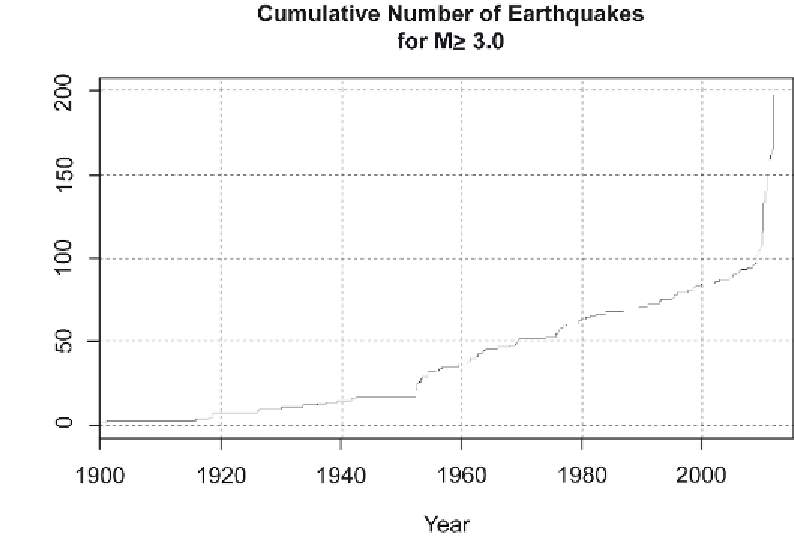Geoscience Reference
In-Depth Information
Cumulative Number of Earthquakes
for M
≥
3.0
FIGURE 3.13
Graph showing the cumulative number of earthquakes
M
> 3.0 in the central Oklahoma
region (34-37°N, 94-100°W) from 1900 to present day, showing a dramatic but as yet unexplained
increase in seismicity since 2009. SOURCE: Ellsworth et al. (2012).
to the tens of thousands of produced water injection wells is small, the events themselves can
cause considerable public concern. Addressing the causes and conditions for these events is
useful for understanding induced seismicity potential for future wastewater injection projects.
Water injection wells only inject (dispose of ) fluid, in contrast to injection wells for EOR
or liquid-dominated geothermal systems where the fluid injected is approximately equivalent
to the fluid extracted. Fluid injection in proximity to a favorably oriented fault system with
near-critical stresses has an increased potential to generate felt induced seismic events in the
absence of nearby extraction that could help maintain reservoir pressure. Class II injection
wells used only for the purpose of water disposal normally do not have a detailed geologic
review performed, and often data are not available to make such a review. Thus, although
fluid pressure in the injection zone and the fracturing pressure of the injection zone can be
measured after the disposal well is drilled, the location of possible faults is often not known as
part of standard well siting and drilling procedures. Importantly, the mere presence of a fault
does not always correlate to increased potential for induced seismicity. Chapter 6 discusses
potential steps toward best practices with these challenges in mind.



Search WWH ::

Custom Search